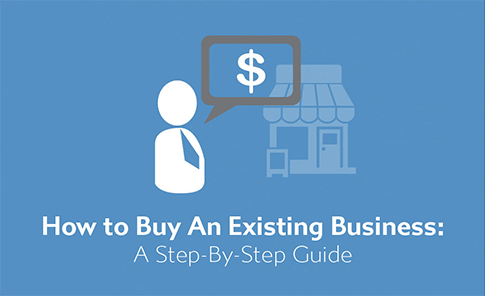Do you dream of being your own boss and running your own business but feel overwhelmed by the idea of starting from scratch? Or perhaps you have the entrepreneurial spirit but lack the experience or business idea? The good news is that you don’t have to set up a business to own and run a business… you can buy shares in an existing business! If you’re considering how to buy into a business, we think this guide will help.
Factors to consider before buying a business
– Trends in the market and business
It’s crucial to conduct market research before investing in a company. Existing firms should not be seeing a decline in their market if this is true for startups as well. You need to consider external elements in addition to a company’s history and internal performance to determine whether it has the potential to be sustainable. Be sure you’re investing in a company that will endure by taking some time to analyze both market and business trends.
– Assess the finance of the business
Reviewing the financial statements of a business is an essential step in assessing its financial health and determining its value. The balance sheet provides information on the company’s assets, liabilities, and equity, while the income statement shows revenue, expenses, and net income over a specific period. The cash flow statement provides information on how cash flows into and out of the business. These financial statements can help a buyer evaluate the profitability, liquidity, solvency, and efficiency of the business.

– Research business history and reputation
Evaluating the reputation of the business is an important factor to consider before buying it. A business’s reputation can have a significant impact on its success and profitability, and a negative reputation can be challenging to overcome. The buyer should evaluate the business’s reputation by reviewing online reviews and ratings on platforms such as Yelp, Google, or Facebook. Additionally, the buyer should evaluate the business’s social media presence, including the frequency and quality of posts and engagement with customers.
– Analysis of future development potential
Evaluating the potential for growth and expansion of a business is an important factor to consider before buying it. The buyer should consider the market trends, customer demographics, and competition to determine the potential for growth in the industry. Additionally, the buyer should evaluate the business’s current operations to identify any areas of improvement or potential expansion.
How to Buy Into a Business: A Step-by-Step Guide

Step 1: Find a business to purchase
The first step is not just to find an existing business, but to find one that is worth buying. There are many businesses for sale. But the businesses that really capture your interest are not so common. You need to find a business that is truly profitable. Search as many places as you can before you start ranking your favorites.
Step 2: Determine your budget
Before buying into a business, it is important to determine your investment goals, including the type of business you want to invest in, your desired level of involvement, and your financial goals. You should also determine your budget for the investment, including any financing options or terms you may need.
Step 3: Negotiate a purchase price
It’s time to negotiate a price once you’ve made the decision to move forward with the acquisition of a firm and you believe you have a strong understanding of the worth of the business. Often, you will do this by presenting a non-committal offer in writing or verbally. The seller will begin negotiating with you if your offer is close to the amount at which they are ready to sell.
Step 4: Conduct due diligence
Due diligence is a critical step in the process of buying into a business. Due diligence refers to the process of thoroughly examining the business’s financial, legal, and operational records to ensure that the information provided by the seller is accurate and to identify any potential issues that may impact the investment. By conducting due diligence, the buyer can gain a better understanding of the business’s financial and operational performance, assess any potential risks or liabilities, and identify opportunities for growth and improvement.
Step 5: Close the transaction
It’s time to finalize the acquisition if there are no unexpected issues discovered during due diligence. Here, you will finalize the purchase agreement and confirm your agreement with the seller on all points. To assist you in this portion of the procedure, you should always engage an attorney. You can pick an end date and ask the lender to fund the acquisition once both parties have signed the buy and selling agreement. Once both sides have reached an agreement, the seller will be paid and you will become the sole owner of the company.
Benefits of buying into a business

- Established systems and processes: An established business typically has established systems and processes in place, including accounting, inventory management, and customer service. This can save time and resources in setting up these systems from scratch.
- Existing customer base: An established business typically has an existing customer base, which means that there is already a market for the products or services offered. This can help the new owner generate revenue more quickly.
- Opportunities for growth: Buying into an existing business can provide opportunities for growth and expansion, such as expanding into new markets, introducing new products or services, or improving operational efficiencies.
- Reduced risk: Buying into an established business can be less risky than starting a new business from scratch, as there is already a proven track record of success and an existing customer base.
Conclusion
In conclusion, buying into a business can be a complex process, but by following a step-by-step guide, it is possible to make a well-informed investment that can provide many benefits. By conducting thorough research, evaluation, and due diligence, the buyer can ensure that the investment aligns with their goals and sets them up for long-term success.

